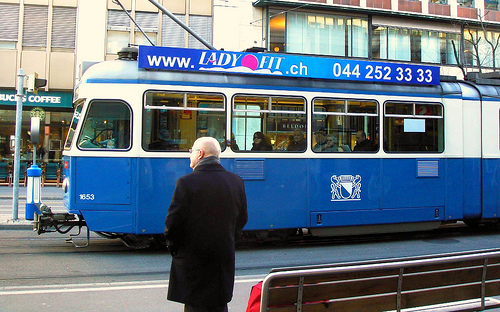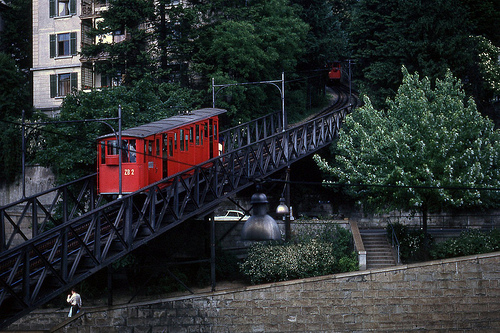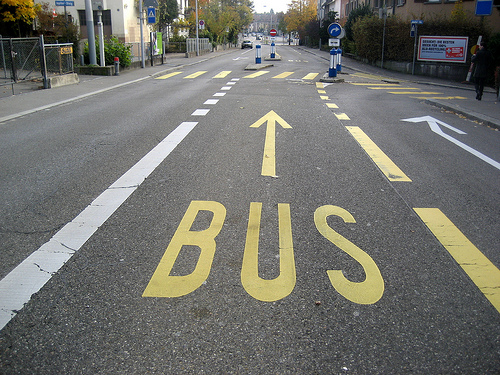M II A II R II K
Senior Member
Zurich, the World's Best Transit City
12 December 2011
By Norman W. Garrick
Read More: http://www.planetizen.com/node/53044
.....
The thing that sets Zurich apart is not just the frequency of the individual bus lines, but the density and interconnectedness of the overall network of buses, trams, commuter rail, funicular railroads and ferries on Lake Zurich. So each morning I have to decide what is the best way to get to the ETH from Urdorf. With my American mind-set I had the idea that to get from one edge place to the other I would have to go through the center of town. I quickly learned that in Zurich it does not work from like that – trips between any two places are much more direct.
- So one lesson that I am learning in Zurich is that an important element in getting 60% of the people in a very wealthy city to use transit is by making an extremely flexible system that is convenient for travel to almost any point in the city, the surrounding communities and even into the nearby Alps. The coordinated and integrated system here makes the American transit obsession with the one-seat ride seem downright silly and totally impractical for serving any but the idealized radial city that probably exist only in the mind of the planner.
- So who pays the freight for this incredible system? Well, surprisingly almost 50% of the cost is from the fare box – this is much higher than most transit systems in the United States. What is clear is that the benefits to the city are immense. The city is remarkably free of cars and all that goes with it – the noise, the pollution, the traffic accidents, the big roads and parking lots. In fact, since Zurich started a program of constantly upgrading their transit system in the late 1970s they have been able to reduce parking in the city center, curtail the building of highways and have actually converted an increasing amount of street space to transit use and public space for people.
- The real story of Zurich is not just about the current state of transit in the city but also a 40-year history of constant upgrades to transit and a lessening of the impact of cars on the city over that time and the concomitant flowering of the city as one of the most livable in the world. It is a story that should be better known in the USA, if only to contradict the idea that in order to thrive cities need to turn themselves into machines for moving traffic. In Zurich they have slowly and steadily worked over the last 40 years to do the exact opposite, while making the city more livable in the process.
.....
A tram in Zurich. Photo: austinevan.

The Zurich Funicular. Photo: Rob Ketcherside.

A bus-only lane in Zurich. Photo: Eurist e.V.

12 December 2011
By Norman W. Garrick
Read More: http://www.planetizen.com/node/53044
.....
The thing that sets Zurich apart is not just the frequency of the individual bus lines, but the density and interconnectedness of the overall network of buses, trams, commuter rail, funicular railroads and ferries on Lake Zurich. So each morning I have to decide what is the best way to get to the ETH from Urdorf. With my American mind-set I had the idea that to get from one edge place to the other I would have to go through the center of town. I quickly learned that in Zurich it does not work from like that – trips between any two places are much more direct.
- So one lesson that I am learning in Zurich is that an important element in getting 60% of the people in a very wealthy city to use transit is by making an extremely flexible system that is convenient for travel to almost any point in the city, the surrounding communities and even into the nearby Alps. The coordinated and integrated system here makes the American transit obsession with the one-seat ride seem downright silly and totally impractical for serving any but the idealized radial city that probably exist only in the mind of the planner.
- So who pays the freight for this incredible system? Well, surprisingly almost 50% of the cost is from the fare box – this is much higher than most transit systems in the United States. What is clear is that the benefits to the city are immense. The city is remarkably free of cars and all that goes with it – the noise, the pollution, the traffic accidents, the big roads and parking lots. In fact, since Zurich started a program of constantly upgrading their transit system in the late 1970s they have been able to reduce parking in the city center, curtail the building of highways and have actually converted an increasing amount of street space to transit use and public space for people.
- The real story of Zurich is not just about the current state of transit in the city but also a 40-year history of constant upgrades to transit and a lessening of the impact of cars on the city over that time and the concomitant flowering of the city as one of the most livable in the world. It is a story that should be better known in the USA, if only to contradict the idea that in order to thrive cities need to turn themselves into machines for moving traffic. In Zurich they have slowly and steadily worked over the last 40 years to do the exact opposite, while making the city more livable in the process.
.....
A tram in Zurich. Photo: austinevan.

The Zurich Funicular. Photo: Rob Ketcherside.

A bus-only lane in Zurich. Photo: Eurist e.V.





